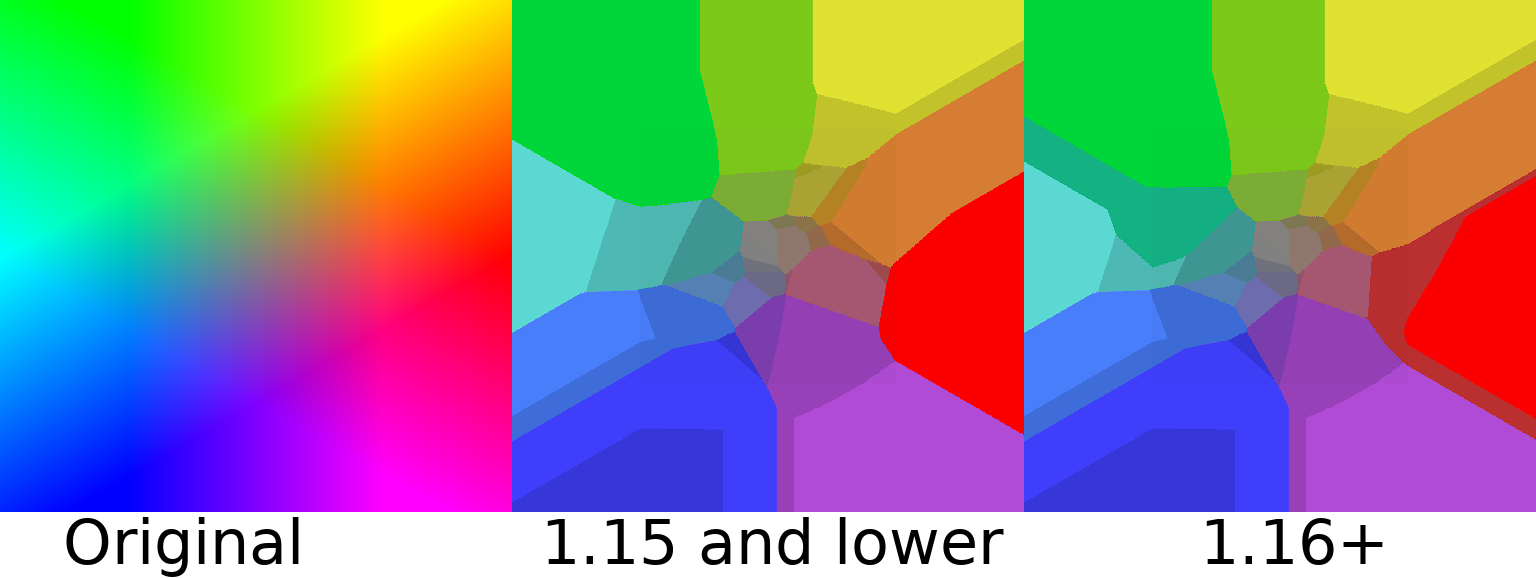Minecraft Maps in a Nutshell¶
When Minecraft uses maps (either from creating a new map in your world, another plugin, or other causes), it occupies a specific ID. This ID is unique for the map and stores information about the graphics of the map.
Map IDs are stored by a data type and have limited IDs available.
Note
For versions 1.13 and above, the map ID increased greatly. For versions that are below 1.13, the maximum map ID is 32767. Otherwise, the maximum is around 4 billion possible ids (counting negative and positive). Make sure to research about this!
Displaying Pixels on Maps¶
A Minecraft map is composed of 128x128 pixels. This means that there are 128 * 128 possible pixels to display or 16,384 pixels. If we combine multiple of these maps together, we are able to simulate an actual video player from the pixels. However, there is a catch.
Minecraft Map Palette¶
The Minecraft map palette is limited to only a little bit more than 100 possible colors. Take a look at this infographic for more information on what I mean.

That means that we have to find a way to convert all possible RGB colors that our video may make (which is 256 * 256 * 256 or 16,777,216 possible colors). We need to find a way to downscale nearly 17 million colors to 100. How can we do this?
The Power of Dithering¶
To solve the given issue above, we can use an algorithm called dithering. You may have heard this in audio where you dither certain sound frequencies. A similar concept is used on images.
Dithering comes in many forms. There is Ordered Dithering which uses a matrix to dither each pixel of an image, but there is also error diffusion dithering which doesn’t use a matrix but rather uses the colors of surrounding neighbors to define its own color. This results in a better overall quality of image, but at the cost of slower speed.
In MinecraftMediaLibrary, it supports Standard Downscaled Dithering, Ordered Dithering, Filter Lite Dithering, and Floyd Steinberg Dithering. Implementation of various dithering algorithms can be found within this package
Speed and Quality of Dithering Algorithms¶
Ordered Dithering - Very fast - Produces a decent quality image
Floyd Steinberg Dithering - Bit slower compared to Ordered Dithering - Produces best quality image possible
Filter Lite Dithering - Bit faster compared to Floyd Steinberg Dithering - Produces best quality image possible (but a little bit darker)
Standard Dithering - Fastest out of all - Produces poor quality image
If you need help or information about anything that you are confused about, feel free to contact me.